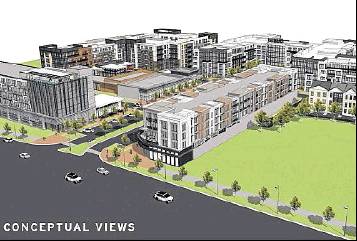"How Cities Use Design to Drive Homeless People Away" can be easily connected to this piece by showing how far some people go to segregate others that are not built to their standards. This article starts off with a picture showing an apartment building that has put spikes on the floor in one corner of the building in london. This picture was a picture someone tweeted with the caption "Anti Homeless floor studes. So much for sommunity spirit :( ". This act was used to discourage homeless people to sleep there at night. The author of this article goes on to speak about many other circumstances where the government or city has in one way or another made these people the "untouchables" of the community in which they reside. The author goes on to say how both mayors in London and Montreal both called the spikes "unacceptable" and "stupid". He talks about how concrete was poored over the spikes by protesters and how they manages to get 130,000 peopple to sign a petition to remove the spikes in London, Tesco, and Montreal. The spikes are the most obvious way in which people have tried to deter the homeless people away but there are other ways in which the government does it where people do not realize until payed close attention to. Skate boarders found ways to go around this deterrents with popping of the studs but then vendors found a way to respond to that action. It's like a ping pong game one goes around the detterant the other finds another one to stop the skateboarder. The same thing is happening with the homeless people. With homeless people the deternt is createing benches in which they could not sleep on. Many people ,like me, do not realize what these arm rests between each seat really do. Some people think its just making sure each person has their own space when sitting so they do not end up squished but in reality they're dettering the homeless people from sleep on them. The author goes on to talk about what kind of homeless detterants for benches there are and how some benches are made to be uncomfortable on purpose. These detterants present the homeless with obsticles they must surpass in order to find a safe place to sleep at night.
Rosenberger, Robert. "How Cities Use Design to Drive Homeless People Away." The Atlantic. Atlantic Media Company, 19 June 2014. Web. 24 Feb. 2017.
 As you can see this is a crucial way in which builders and the government will deter people and segregate them purposely. This is the same thing that the government is doing with homeless people by not making the benches a good place to sleep and how this apartment building in the picture about put spikes so homeless people could not sleep over night there.
As you can see this is a crucial way in which builders and the government will deter people and segregate them purposely. This is the same thing that the government is doing with homeless people by not making the benches a good place to sleep and how this apartment building in the picture about put spikes so homeless people could not sleep over night there. Just like what they are saying in this paragraph to reading architecture , you have to be specially oriented. The way i connect this piece of writing to my supplemental analysis is through this picture. The developers looks at what the community of dekalb county they were looking at and see where people spent the most money. They saw they would need apartments for the growing population but also shopping centers because you need somewhere to buy groceries and clothing. What they did not think about though were the underground problems. Where they could build this complex. Where it was needed. By the sewer system, this would not be the place unless someone made room for them.
Just like what they are saying in this paragraph to reading architecture , you have to be specially oriented. The way i connect this piece of writing to my supplemental analysis is through this picture. The developers looks at what the community of dekalb county they were looking at and see where people spent the most money. They saw they would need apartments for the growing population but also shopping centers because you need somewhere to buy groceries and clothing. What they did not think about though were the underground problems. Where they could build this complex. Where it was needed. By the sewer system, this would not be the place unless someone made room for them.